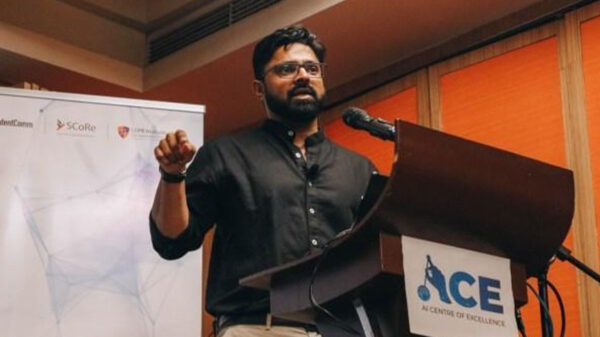At the Win-Win·Huawei Innovation Week, Yang Chaobin, President of Huawei’s Wireless Solution, delivered a keynote speech titled “Continuous Innovation Towards 5.5G for a New Journey of 5G Industry”.
In his speech, Yang summed up 5.5G’s key characteristics — 10 Gbps experience, 100 billion connections, and native intelligence. “Driven by new toC and toB services, we will enhance eMBB, URLLC, and mMTC, and provide new capabilities of sensing, passive IoT, positioning, and native intelligence. With them, we will build intelligent 5.5G that support 10 Gbps downlink, 1 Gbps uplink, and 100 billion connections, embarking on a new journey of 5G”.
5G enhancements are imperative to support new user experience and digital industry services. As XR Pro and other toC services continue to gain popularity, networks must increase user-perceived rates tenfold for mobile connections. ToB services require high uplink speeds and sensing capabilities, medium-speed connections, and passive IoT. “This means that 5.5G networks must provide a downlink speed of 10 Gbps and an uplink speed of 1 Gbps, support 100 billion IoT connections, and become natively intelligent,” commented Yang.
Ultra-high bandwidth and ELAA are the key to downlink 10 Gbps. Ultra-large bandwidth has proven essential to mobile networks, requiring all sub-100 GHz resources to be fully utilized. As high bands are increasingly used, extremely large antenna array (ELAA) will be necessary to address the resulting coverage contraction. ELAA enables high-band networks to provide the same coverage as C-band so that operators can provide 10 Gbps to all users at all times no matter where they are. ELAA MetaAAUs have been put into commercial use in more than 30 cities. Field tests are completed on 6 GHz band, showing that co-coverage with C-band is possible in cases where outdoor deployments cover outdoor (O2O) and indoor (O2I) users. mmWave can ensure an overall peak rate of 10 Gbps, with a Gbps experience possible even at a distance of 5 km.
Enhanced uplink/downlink decoupling and multi-band convergence are the key to 1 Gbps uplink. ToB connections often feature far stronger uplink capabilities than downlink. With the uplink decoupled from the downlink, toB services flexibly use uplink and downlink spectrum on different bands, including existing FDD spectrum and newly defined uplink-only spectrum. Through uplink/downlink decoupling, spectrum convergence will be possible to ensure Gbps uplink. To date, uplink/downlink decoupling has already been commercially adopted in mining and steel sectors to ensure 1 Gbps uplink transfer required for 100-channel HD backhaul and panoramic remote control.
5G-based RedCap, NB-IoT, and passive IoT will enable 100 billion connections in the next 10 years. RedCap is already available for commercial use. Compared with eMBB, RedCap features a low power consumption and high cost effectiveness, making it to be easily adopted on a massive scale. Passive IoT combines cellular communications and passive tagging and features low terminal prices and long coverage distances, providing an ideal option for connecting tens of billions of passive IoT devices. Based on Huawei’s verification, passive IoT supports a coverage distance exceeding 200 m. Additionally, sensing will be integrated onto mobile networks, facilitating the use of mmWave high bandwidth to improve sensing precision. As such, speed and distance measurements and imaging will be enhanced to further improve exception identification for smart transportation, geo-fencing for smart factories, and other industry applications, ultimately enabling digital replica.
5.5G will ensure native intelligence for service operation, network optimization, and simplified O&M. 5G developments will increase service varieties and differentiation, with networks running with multiple bands and radio access technologies concurrently. This justifies the urgent necessity for introducing intelligence into mobile networks to maximize resource utilization and ensure service experiences. In addition, intelligence will best balance network performance and energy consumption, which will be important to fulfill increasing 5G traffic demand. The native intelligence will further enable networks to facilitate real-time sensing, modeling and prediction, and multidimensional decision-making. As such, networks will be intelligently optimized, with various resources to be configured on demand to deliver optimal user experience and capacity. O&M will be intelligently simplified, with site planning, deployment, and troubleshooting automated to maximize performance and energy saving.
“To meet the diverse requirements across various industries of the next 10 years, 5G must enhance existing capabilities and support new capabilities of high-precision sensing, passive IoT, and native intelligence. We will continue to work with global partners to further innovate 5G and strive for the 5.5G era by protecting the investments of operators,” concluded Yang.










































































































